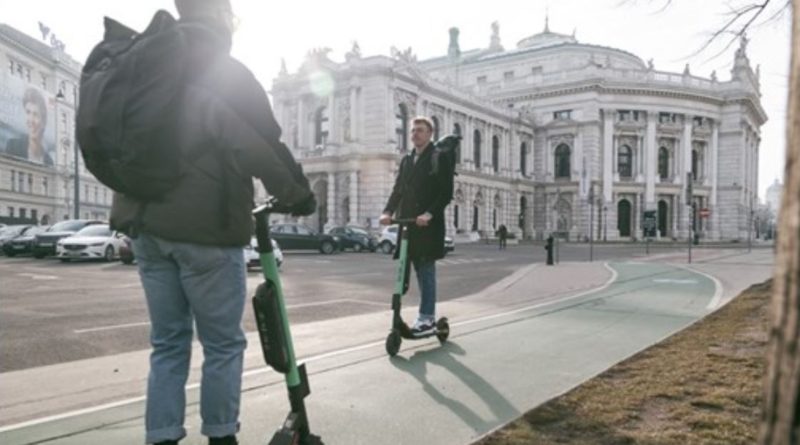March of the e-Scooter could lead to more safe cycling infrastructure
In the Austrian capital of Vienna there are signs that the growing popularity of the electric scooter may lead to an increase in safe cycling infrastructure.
At present, there are 7,000 of the light mobility vehicles on the streets of Vienna; Lime, Bird, Tier Mobility, Wind Mobility, Circ and Hive have invested in providing hire units. Lime is financed by Google, Hive by BMW and Daimler, so there’s good odds these vehicles are considered by big business as a ‘future mobility’ of sorts.
In turn, this uptick of use of the city’s infrastructure has prompted the Pedestrian Commissioner of the Vienna Mobility Agency, Petra Jens, to call for quick development of new and safe cycling infrastructure that would be shared with electric scooter users.
“Nobody reckoned with the fact that so many suppliers would enter the market,” explains Jens. “The Vienna Mobility Agency is therefore calling for further expansion of the cycle infrastructure.”
A dozen start-ups active in the sector have already raised more than $1.5 billion in funding, according to Boston Consulting Group. The management consultancy estimates the volume of the global market in 2025 will be 40 to 50 billion dollars.
The term micro-mobility covers electric scooters, e-Bikes and electric pedal scooters. According to estimates by management consultants McKinsey, this market will generate sales of around 150 billion dollars in Europe by 2030, and as much as 500 billion dollars worldwide, although this will likely hinge on legislative tweaks.
With procurement costs of around 400 dollars per scooter, a provider could reach the profit zone after just over three months. The Hypermotion trade fair, as well as areas of the Eurobike Show, are also dedicated to this special area of mobility. Special talks will be held on this area of mobility in September in Friedrichshafen.
What differentiates e-scooters from bicycles? E-scooters have lights but they are not equipped with the same amount of reflectors, they do not achieve the same brake deceleration as wheels and you cannot give hand signals to turn because you have to keep both hands on the handlebar. Does this lead to more accidents? ‘There will be accidents, as with all other vehicles. Whether the number of accidents will increase significantly as a result has not yet been proven’, says the Pedestrian Commissioner of the City of Vienna.
The legislation on mainland Europe is presently as follows:
- In Italy, e-scooters are allowed to drive at 6 km/h in pedestrian zones and 20 km/h on the carriageway, but they are prohibited from travelling at night and in heavy rain.
- In Spain, they are allowed to use cycle paths, bus lanes and carriageways at a maximum speed of 30 km/h; under-16s must wear a bicycle helmet.
- In Greece you have to be at least 18 years old and can drive at a maximum of 20 km/h.
- In Austria, electric scooters may have a maximum design speed of 25 km/h and must use cycle paths and carriageways only where there are no cycle paths.
- In Germany, e-scooters may be driven at speeds of up to 20 km/h; they may be used from the age of 14 on cycle paths and, where appropriate, on carriageways. Insurance is also obligatory.
- In the UK, a recent CyclingIndustry.News article talked over the legislative direction.
As with many of the cycle hire bikes that hit the streets early on the durability of some e-Scooters has been criticised.
“The life cycle of an electric scooter is on average two months, after which the vehicles are repaired or scrapped immediately. This is not a sustainable use of resources,” complains Jens.
With an average rental time of ten minutes it is, as yet, too early to tell whether the scooter trips are replacing car journeys or trips that could have been completed, albeit slower, on foot.



